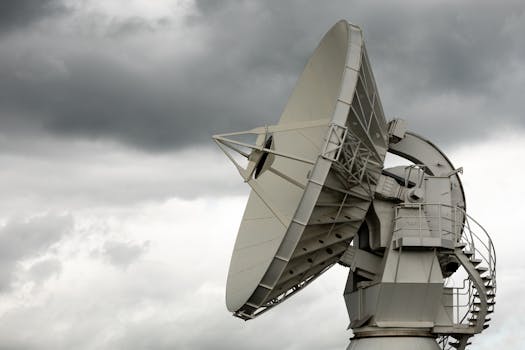Exploring the World of GEO Satellites: Understanding the Technology and Applications

GEO Satellites: Introduction to the Focus Keyword
GEO satellites, or Geostationary Earth Orbit satellites, are a type of satellite that orbits the Earth at an altitude of approximately 36,000 kilometers. These satellites are stationed above the equator and remain fixed in relation to a specific point on the Earth’s surface, allowing them to provide continuous coverage of a particular region. The Focus Keyword, GEO satellites, is a critical component of modern telecommunications, navigation, and weather forecasting systems.
GEO satellites were first conceived in the 1940s by science fiction writer Arthur C. Clarke, who proposed the idea of using geostationary satellites for telecommunications. The first GEO satellite, Syncom 2, was launched in 1963, and since then, thousands of GEO satellites have been launched into orbit. Today, GEO satellites play a vital role in modern society, providing a range of services including television broadcasting, telecommunications, navigation, and weather forecasting.
Technology and Applications of GEO Satellites
GEO satellites use a range of technologies to provide their services, including transponders, antennas, and solar panels. Transponders are used to receive and retransmit signals, while antennas are used to transmit and receive data. Solar panels provide the power necessary to operate the satellite’s systems. GEO satellites also use a range of propulsion systems, including ion thrusters and Hall effect thrusters, to maintain their position in orbit.
GEO satellites have a range of applications, including television broadcasting, telecommunications, navigation, and weather forecasting. They are used by television networks to broadcast their channels to a wide audience, and by telecommunications companies to provide internet and phone services to remote areas. GEO satellites are also used by navigation systems, such as GPS, to provide location information and timing signals. Additionally, they are used by weather forecasting agencies to monitor the weather and provide warnings of severe weather events.
Impact of GEO Satellites on Society
GEO satellites have had a significant impact on modern society, providing a range of services that have revolutionized the way we communicate, navigate, and understand the world around us. They have enabled global telecommunications, allowing people to communicate with each other instantly, regardless of their location. They have also enabled navigation systems, such as GPS, which have transformed the way we travel and conduct business.
GEO satellites have also had a significant impact on the field of weather forecasting, allowing meteorologists to monitor the weather and provide warnings of severe weather events. They have also enabled the development of new industries, such as satellite television and satellite radio, which have provided new sources of entertainment and information.
Challenges and Future Developments
Despite the many benefits of GEO satellites, there are also challenges associated with their use. One of the main challenges is the risk of collisions with other satellites or space debris, which can cause significant damage and disruption to services. There is also the risk of interference from other satellites or terrestrial systems, which can affect the quality of service.
Despite these challenges, the future of GEO satellites looks bright, with new technologies and innovations being developed all the time. One of the most significant developments is the use of high-throughput satellites, which can provide much faster data speeds and greater capacity. There is also the development of new propulsion systems, such as advanced ion thrusters, which can provide more efficient and longer-lasting propulsion.
In conclusion, GEO satellites play a critical role in modern telecommunications, navigation, and weather forecasting. They have revolutionized the way we communicate, navigate, and understand the world around us, and have enabled the development of new industries and services. As technology continues to evolve, it is likely that GEO satellites will remain a vital component of modern society, providing essential services and enabling new innovations and developments.




